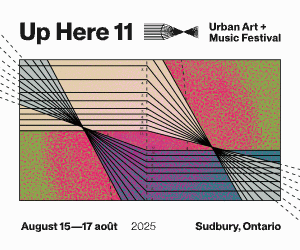The Broken Saxophone That Shaped Jairus Sharif’s Water & Tools
On his debut album, the rising experimentalist finds healing and compassion through music.
By Thomas Johnson
Photo by Arif Ansari
- Published on
Fittingly, Sharif moseys through the rain. His pace is irregular, with strides of varying lengths weaving him through the street at a tempo wholly unique to him. All of his motion is informed by the raw fluid energy of a talented free jazz cat. He likens his musicianship to a siphon, ever-searching for formless energy floating in murky waters to manifest into love — which he believes is the ultimate form of music.
Prodigious as he is, Sharif sees himself indebted as a student first and foremost. He proactively and proudly avows recognition to his long list of influences. ”Plant a shade tree under which you will never sit,” he says. “That means to set something up for people along the way that you’ll never meet. That’s the thing about being an artist, to leave behind a signature.” His references can be as eclectic as they are esoteric; in chronological order he mentions Lisa Joyce Hobson, The Golden Calgarians, Iggy Pop, Death (the punk band), Bo Diddley, the entire Tribe Records Roster, Charlie Haden, Alice Coltrane, Dan Hammrick, Death Grips, Albert Ayler, Gary Bartz, Ian MacKaye, Charles Tyler, 2Pac, Milford Graves, billy woods, T-Pain, and more.
At various junctures these names have operated as pillars of wisdom, shelter, and inspiration for Sharif. He is steeped in all kinds of music history. The concept of a musical lineage is ever present in his mind. And to him, imitation is the sincerest form of flattery. “I love people who aren’t afraid to do an homage, or dress as a character. Give it your all. Stop pretending that you’re so you, that you can’t be that. We’re all dynamic, we can all change,” he says. While all the aforementioned names have filled Sharif’s cup, four stand out: Lisa Joyce Hobson, The Golden Calgarians, Albert Ayler and Gary Bartz.
The first: Lisa Joyce Hobson was his primary parent and mentor. She wrote for the Calgary alt-monthly Vox in the 90s and hosted a number of shows on CJSW. She loved punk rock, folk and roots, and above all spirited debates. She invited Sharif into her home, affectionately dubbed Lisa’s Island, and took him under her wing. When Lisa fell ill, Sharif used music as a palliative shelter. He immersed himself in his studies, built a studio in Lisa’s Island, and began using his voice, hands, and machinery to convey energy into something identifiable and tangible.
The second: seminal Calgary punk band, the Golden Calgarians. Dino, the group’s lead singer, was the founder of the Night Gallery, a now defunct night club that served as the epicentre of all things punk in Calgary during the 1980 and 90s. “I was in there when I was 10 years old, partying, soaking it in,” he says.
That’s how Jairus Sharif became a punk. It didn’t stick though.

Photo: Samantha Thompson
“I was always looked at as kind of exotic. But they were in the suburbs and I was in the Night Gallery. And even if the guys in the band weren’t like that, I felt tokenized.”
“I’ve been circling the wagons for a long time. Feeling weird for a long time in the music scene. Never fit into any of that stuff,” he says. “I was always looked at as kind of exotic. But they were in the suburbs and I was in the Night Gallery. And even if the guys in the band weren’t like that, I felt tokenized. I was the lead singer, and I can’t easily fit into that mold. But I’ve lived in this city a long fucking time. I don’t like the way that feels. I’ve had enough of that. The exotic guy.”
Sharif DJ’d for a while, but when the COVID pandemic aligned with Black Lives Matter, he stepped away and hit the books, opting to listen exclusively to Black music — though for him, that’s not just restricted to music by Black artists.
“I love the first white rendition of a Black music genre. I love that stuff. Forget race — when the dominating culture accepts the dominated culture for love? I wanna be that. That’s for love. That’s where art and race cross and it’s always beautiful. It’s always good,” he says.
He found love in mixed-race bands, embraced Dan Hamrick and Charlie Haden. He studied Tribe Records, an influential and understated label-collective of jazzists. The label’s mantra was “Music Is The Healing Force Of The Universe.” Which brings us to the next two names from Sharif’s Foundational Four — Albert Ayler and Gary Bartz.
Bartz was the inspiration. Through Bartz, Sharif found the alto saxophone. He bought one and taught himself to play, and within two months he was uploading free-jazz EPs to his Bandcamp page. He was drawn to the alto’s jaggedness and versatility. “It’s sharp, it doesn’t have the beauty of the soprano,” he says. “It has almost no flow. It’s very harsh and forced. Punchy, and quick. Sharp, lots of feedback. Almost out of control. It feels like it’s peaking.”

“‘Music Is The Healing Force Of The Universe.’ I believe that.”
Albert Ayler — the holy ghost of free jazz — provided the template. Music Is The Healing Force Of The Universe, the Tribe Records mantra, is also the title of Ayler’s final album. A misunderstood opus of mood and feel, the music and message became Sharif’s creed. “‘Music Is The Healing Force Of The Universe.’ I believe that,” he says. “When you do improvised music or really truthful music, you’re being a conduit. Something you can’t really identify, and turn it into something you can identify using your voice, or hands, or machinery or whatever. In the past year, I’ve needed a lot of healing. Personal healing, community healing.”
At the centre of these wide-ranging influences lies Water & Tools, Sharif’s debut album. Nine tracks of distilled frenzy, ferocity, and repose. There’s more to it than rollicking, low-end heavy free jazz. It’s for listeners of Shabaka Hutchings and Sunn 0))), admirers of Ornette Coleman and Eric Dolphy, and for ears replete with scar-tissue, trauma and curiosity. Above all else, it’s an album of truth and healing. Sharif would learn partway through recording that his alto was broken. He kept recording anyway. If a broken instrument was his truth, so be it.
Lead single “Surfacing” is cosmic and propulsive. “Earth III” and “Ra Comm 10” are uncompromising slices of spiritual free-afrofuturism. The final joint, “Dr. Teddy’s Hi Test” is anthemic and arena-ready. These are songs of tribute and homage. The 12 minute intro that is “Humility” acts as a fulcrum for the eight songs that follow. What begins as a tempest of crashing drums, waves of drone, and all of nature’s fury eventually calms itself. In the storm’s heart, when the layers of noise and friction and cacophony swell beyond their means and topple and subside, there is a dreamlike organ, birdsong, Sharif’s broken alto, and nirvana. It finds peace from within itself, like Sharif has ultimately been able to do. That alone makes his journey a triumph.
In the album’s final moments, after the music stops and before it fades to black, Sharif can be heard saying, “I feel good. I feel I’ve got more understanding. More…everything I guess.”


By Leslie Ken Chu
The rock stalwarts lean into vulnerability and nuance, proving that evolution doesn’t have to mean softening the blow.
By Cam Delisle
The pop veteran beamed into Rogers Arena Tuesday night with a glitchy arsenal of remixed hits—some faring better than others in her AI-styled end-of-the-world fantasia.













